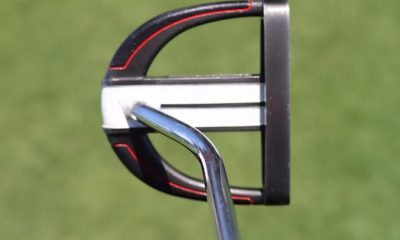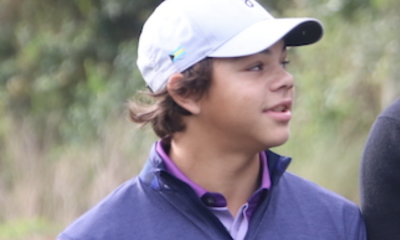Instruction
Golf instruction: What is it?

In my last article, I disputed the term “golf instruction,” because I feel it is too broad of a description. If that’s true, then just what is it that I, and 28,000-plus others, do for a living?
There is an endless debate in teaching golf with regard to methods, system, theories, modes of correction etc. Teacher A thinks this is best, teacher B thinks that is best, Teacher C has a completely different view. So, it’s no surprise then that teachers hear their students say things like, “well so-and-so says this” or “I read a book which suggested…I’m so confused.”
In other words, the students have a general view that one teacher said something that another contradicted, so what are they to do? But here is where it all gets quite intriguing: Teachers A, B and C may all be right. Or all be wrong.
Huh?
In my experience, there is no such thing as “golf instruction.” Collectively. There is only golf instruction by one particular instructor during one particular session. That same instructor is likely to give his/her next student completely different “golf instruction,” or in my opinion, should. It’s often been said that golf swings are like snowflakes, no two are alike.
So we have to ask the obvious question: How could “golf instruction” not vary from student to student? You show me one “fundamental” of the swing, and I can likely find a great player who did not execute that particular fundamental (other than solid contact of course), but I’m referring to the method one chooses to get there.
Of course, there are parameters by which we are all guided. Teaching golf is not some willy-nilly random act of calling out suggestions with no basis in fact. They must be based on certain principles of course, but mostly they must be relevant. That is why I argue there is no such animal as “golf instruction” per se.
So, what principles are directing these individual sessions? Well, let’s start at the beginning. And the end. Impact! The only purpose of any golf lesson is to help the golfer hit the ball better and more consistently. There can be an infinite number of ways to get there. No one way is necessarily superior to another. We have “classic” swings and “quirky” swings on the PGA Tour all making a great living playing golf.
As to the lesson itself, the great John Jacobs used to say a lesson is conducted in three distinct parts: Diagnosis, Explanation, and Correction. One can substitute their own words for those segments but clearly here is what he meant: The individual swing flaw(s) is recognized, then it is explained to the student, and lastly teacher/student work on correcting it.
Now, here is where the debate may ensue and clearly where the student confusion is likely to arise. Teachers may have their unique style of explaining and their own individual tool kit (lesson plan) for correction, but there is little room for debate about the diagnosis. If there is an impact flaw, the swing is either too shallow or too steep, the clubface is either open or closed, and the swing direction is either too much to the left or too much to the right of the intended line.
In modern golf instruction, we have the aid of several diagnostic tools we did not have some years ago, but even with the advent of video, TrackMan, Boditrak etc, we still have to start at jump street: ball flight. What is the golf ball doing, and why is it doing it for that particular student? When a golfer develops a swing pattern, the ball flight characteristics are predictable and consistent. Nobody goes from steep to shallow or open to closed, or inside to outside from swing to swing. If they did, our jobs as instructors would be maddening. Golfers all fall into patterns; once the pattern develops, the misses are predictable.
The problem can be caused by several different things, and the teacher may have a preference for which one he/she wants to attack first. They may also have different drills or training aids used to help correct the flaw, but again, the goal of the lesson remains the same: correct impact to achieve better results. This is the tangible expression of “golf instruction.” It is the common ground where all teachers meet. All systems and theories of “golf instruction” are thrown out the window when the teacher is standing behind a golfer who is shanking four out of five shots. The challenge is clear here: help him/her find the face, understand why they tend to shank and what to do to avoid it.
The legendary Bob Toski told me recently that 80 percent of the golfers he worked with over his illustrious career were middle-to-high handicaps. This is true for probably 99 percent of the people teaching our game. It is for me, I know. The vast majority of my students are not seeking optimal golf, they are looking for functional golf. Our students are not looking to play on the PGA or LPGA Tour, or even to win the club championship. They just want to hit the ball better, theories be damned!
The great teacher Jim Hardy has said we have two different kinds of golf lessons: correction and creation. We are either trying to correct an existing move (90 percent of the time) or build a whole new swing. Teachers avoid the latter like the plague for two reasons: It is usually futile and often takes forever. I usually reserve it for brand new players, where the objective is to create a swing from scratch. But once a pattern is set, I have found it most effective to correct within that pattern.
Over the years, I have had any number of students. particularly seniors, who say something like, “Well, back when I first learned, they were teaching this or that.” I am always quick to ask in return: “Who is they?” See, again the student is making a collective reference-not an individual one. The list is endless—golf is a left-sided game, golf is a right-sided game, turn in a barrel, square-to-square, Stack and Tilt, the A-Swing, the Natural Golf swing—are likely all good-for some. But they are not a panacea.
When teachers write books or instructional articles, they are type-cast into a mode. This is exactly why magazine articles and now the internet are double-edged swords. The articles can be interpreted in such a way, it may appear that the book is all that teacher teachers (I recently had a student who read or heard a tip on getting his swing wider. The problem was his swing was already wide. Now it was so wide, he was hitting a foot behind it! This is not unusual). The reality is that any teacher who is on top of their craft handles each student differently My approach, for example, is: Let me see what you’re doing, because then and only then can I make an accurate diagnosis, and set a lesson plan. When I’m asked, “Do you teach this”? My response is “Well, let’s see.”
So, what is “golf instruction” then? Perhaps we could define it like this: A meeting of student and teacher to solve an individual problem, at a particular time to create, in that player, an awareness of their individual tendencies. Just as your equipment has to be fitted, so does your lesson.
- LIKE37
- LEGIT5
- WOW5
- LOL1
- IDHT1
- FLOP8
- OB6
- SHANK12
Instruction
Clement: Laid-off or perfect fade? Across-the-line or perfect draw?

Some call the image on the left laid off, but if you are hitting a fade, this could be a perfect backswing for it! Same for across the line for a draw! Stop racking your brain with perceived mistakes and simply match backswing to shot shape!
- LIKE0
- LEGIT0
- WOW0
- LOL0
- IDHT0
- FLOP0
- OB0
- SHANK1
Instruction
The Wedge Guy: The easiest-to-learn golf basic

My golf learning began with this simple fact – if you don’t have a fundamentally sound hold on the golf club, it is practically impossible for your body to execute a fundamentally sound golf swing. I’m still a big believer that the golf swing is much easier to execute if you begin with the proper hold on the club.
As you might imagine, I come into contact with hundreds of golfers of all skill levels. And it is very rare to see a good player with a bad hold on the golf club. There are some exceptions, for sure, but they are very few and very far between, and they typically have beat so many balls with their poor grip that they’ve found a way to work around it.
The reality of biophysics is that the body moves only in certain ways – and the particulars of the way you hold the golf club can totally prevent a sound swing motion that allows the club to release properly through the impact zone. The wonderful thing is that anyone can learn how to put a fundamentally sound hold on the golf club, and you can practice it anywhere your hands are not otherwise engaged, like watching TV or just sitting and relaxing.
Whether you prefer an overlap, interlock or full-finger (not baseball!) grip on the club, the same fundamentals apply. Here are the major grip faults I see most often, in the order of the frequency:
Mis-aligned hands
By this I mean that the palms of the two hands are not parallel to each other. Too many golfers have a weak left hand and strong right, or vice versa. The easiest way to learn how to hold the club with your palms aligned properly is to grip a plain wooden ruler or yardstick. It forces the hands to align properly and shows you how that feels. If you grip and re-grip a yardstick several times, then grip a club, you’ll see that the learning curve is almost immediate.
The position of the grip in the upper/left hand
I also observe many golfers who have the butt of the grip too far into the heel pad of the upper hand (the left hand for right-handed players). It’s amazing how much easier it is to release the club through the ball if even 1/4-1/2″ of the butt is beyond the left heel pad. Try this yourself to see what I mean. Swing the club freely with just your left hand and notice the difference in its release from when you hold it at the end of the grip, versus gripping down even a half inch.
To help you really understand how this works, go to the range and hit shots with your five-iron gripped down a full inch to make the club the same length as your seven-iron. You will probably see an amazing shot shape difference, and likely not see as much distance loss as you would expect.
Too much lower (right) hand on the club
It seems like almost all golfers of 8-10 handicap or higher have the club too far into the palm of the lower hand, because that feels “good” if you are trying to control the path of the clubhead to the ball. But the golf swing is not an effort to hit at the ball – it is a swing of the club. The proper hold on the club has the grip underneath the pad at the base of the fingers. This will likely feel “weak” to you — like you cannot control the club like that. EXACTLY. You should not be trying to control the club with your lower/master hand.
Gripping too tightly
Nearly all golfers hold the club too tightly, which tenses up the forearms and prevents a proper release of the club through impact. In order for the club to move back and through properly, you must feel that the club is controlled by the last three fingers of the upper hand, and the middle two fingers of the lower hand. If you engage your thumbs and forefingers in “holding” the club, the result will almost always be a grip that is too tight. Try this for yourself. Hold the club in your upper hand only, and squeeze firmly with just the last three fingers, with the forefinger and thumb off the club entirely. You have good control, but your forearms are not tense. Then begin to squeeze down with your thumb and forefinger and observe the tensing of the entire forearm. This is the way we are made, so the key to preventing tenseness in the arms is to hold the club very lightly with the “pinchers” — the thumbs and forefingers.
So, those are what I believe are the four fundamentals of a good grip. Anyone can learn them in their home or office very quickly. There is no easier way to improve your ball striking consistency and add distance than giving more attention to the way you hold the golf club.
More from the Wedge Guy
- The Wedge Guy: Golf mastery begins with your wedge game
- The Wedge Guy: Why golf is 20 times harder than brain surgery
- The Wedge Guy: Musings on the golf ball rollback
- LIKE86
- LEGIT13
- WOW6
- LOL1
- IDHT0
- FLOP4
- OB1
- SHANK8
Instruction
Clement: Stop ripping off your swing with this drill!

Not the dreaded headcover under the armpit drill! As if your body is defective and can’t function by itself! Have you seen how incredible the human machine is with all the incredible feats of agility all kinds of athletes are accomplishing? You think your body is so defective (the good Lord is laughing his head off at you) that it needs a headcover tucked under the armpit so you can swing like T-Rex?
- LIKE0
- LEGIT2
- WOW2
- LOL0
- IDHT0
- FLOP0
- OB0
- SHANK2
-

 19th Hole2 weeks ago
19th Hole2 weeks agoDave Portnoy places monstrous outright bet for the 2024 Masters
-

 19th Hole3 days ago
19th Hole3 days agoJustin Thomas on the equipment choice of Scottie Scheffler that he thinks is ‘weird’
-

 19th Hole2 weeks ago
19th Hole2 weeks agoTiger Woods arrives at 2024 Masters equipped with a putter that may surprise you
-

 19th Hole3 days ago
19th Hole3 days ago‘Absolutely crazy’ – Major champ lays into Patrick Cantlay over his decision on final hole of RBC Heritage
-

 19th Hole2 weeks ago
19th Hole2 weeks agoTwo star names reportedly blanked Jon Rahm all week at the Masters
-

 19th Hole1 week ago
19th Hole1 week agoReport: LIV Golf identifies latest star name they hope to sign to breakaway tour
-

 19th Hole1 week ago
19th Hole1 week agoNeal Shipley presser ends in awkward fashion after reporter claims Tiger handed him note on 8th fairway
-

 19th Hole1 week ago
19th Hole1 week agoBrandel Chamblee has ‘no doubt’ who started the McIlroy/LIV rumor and why
























Robert Johansson
May 19, 2020 at 4:25 pm
Its easy to teach the same thing to all students so they can have a good swing and play fun golf.
except you guys cant teach it.
geohogan
May 16, 2020 at 8:11 am
“….brain research proves it. As the most advanced part of the body, the hand is capable of detailed and refined motor movements. So instead of taking the hands out of the golf swing, we should train them to perform correctly. Concentrating on the role of the hands during the swing results in a more intuitive, athletic action and better shots under pressure. The golfer who does this is more in tune with the club throughout the swing, especially at impact, and will perform at a higher level with greater consistency.” Golf Digest,Bob Toski
https://www.golfdigest.com/story/what-bob-toski-tells-young-players
geohogan
May 6, 2020 at 4:43 pm
To understand any type of instruction for complex chain action movements
requires at a minimum to understand how the subconscious and motor cortex coordinate
and limitations of proprioception and conscious muscle contractions.
ie need to know what can be controlled consciously by practice and what has to be left to preprogram by our subconscious.
geohogan
May 6, 2020 at 10:38 pm
Bob Toski has the right idea
https://www.golfdigest.com/story/what-bob-toski-tells-young-players
A. Commoner
Apr 23, 2020 at 9:34 am
Where are ghost writers when you really need them?